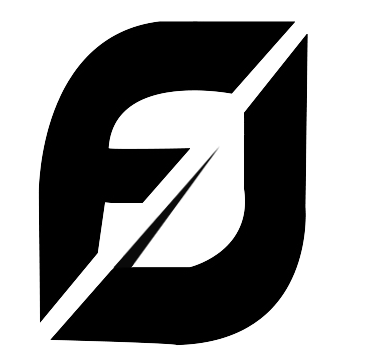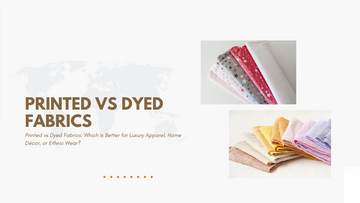In the vibrant and competitive world of textiles, the choice between printed and dyed fabrics is more than just a matter of design – it directly impacts quality, durability, sustainability, and market appeal. Whether you're sourcing for luxury fashion, curating home décor collections, or designing ethnic wear, understanding this difference is key to making the right decision.
As someone who has worked across international textile exhibitions, B2B sourcing platforms, and global buyer-seller networks, I’ve seen how this choice influences both perception and performance. Let's break down the technical, commercial, and creative differences to help you decide what works best for your application.
What Is Dyed Fabric?
Our Latest Embroidered & Designer Fabrics
Dyeing is the process of soaking yarn or fabric in pigments or chemical solutions to give it a uniform color. Depending on the stage of dyeing, we have:
-
Fiber Dyeing: For deep and rich colors, common in woolens
-
Yarn Dyeing: For plaids and stripes (think shirts and checks)
-
Piece Dyeing: Most common method for solid-color apparel
-
Garment Dyeing: Adds color after stitching (popular in fashion-forward brands)
Pros:
-
Deep penetration of color
-
Long-lasting vibrancy
-
Better wash and rub fastness
-
Softer hand feel in most cases
Cons:
-
Limited design options (mainly solid colors)
-
Hard to reverse once dyed
-
Not ideal for small quantity custom orders
What Is Printed Fabric?
Printing adds designs and motifs to the fabric surface using pigments, dyes, or digital inks. Modern printing methods include:
-
Screen Printing – Ideal for large quantities
-
Digital Printing – Preferred for custom and complex artwork
-
Block Printing – Traditional craft method used in ethnic textiles
-
Rotary Printing – High-speed and industrial scale
-
Explore Our Range of Premium Fabrics
- ✔️ Viscose Muslin
- ✔️ Viscose Organza
- ✔️ Viscose Row Silk
- ✔️ Natural Crepe
- ✔️ White Cotton
- ✔️ Kora Cotton
- ✔️ Modal Satin
- ✔️ Gaji Silk
- ✔️ Linen Satin
- ✔️ Bemberg Chiffon
- ✔️ Dola Silk
- ✔️ Upada Silk
- ✔️ Nylon Chanderi
- ✔️ Nylon Dhupian
- ✔️ Satin Georgette
- ✔️ Viscose Satin
- ✔️ Tissue Anmol
- ✔️ Tissue Gold
- ✔️ Tissue Silver
- ✔️ White Mull Cotton
- ✔️ Santoon RFD Printed
- ✔️ Russian Silk
- ✔️ German Chiffon
- ✔️ Row Silk Satin
Pros:
-
Unlimited design flexibility
-
Multiple colors and layers
-
Ideal for fashion trends, fast turnarounds
-
Easy customization for branding
Cons:
-
Surface-level color – lower durability
-
Can crack or fade with washing
-
May feel stiff depending on the ink used
Use-Case Comparison
Luxury Apparel
Preferred: Dyed fabrics (base) + Digital Prints (highlighting)
-
For high-end fashion, especially in natural fibers like silk, georgette, and modal, the fabric base must feel premium.
-
Dyed fabrics offer consistency and depth. Add printed elements to create seasonal variations.
-
Example: Solid-dyed silk georgette with digitally printed floral overlays
Home Décor
Preferred: Dyed for solids, Printed for thematic decor
-
Curtains, cushion covers, and upholstery require high rub-fastness.
-
For minimalist interiors: Go with dyed linens or cottons.
-
For boho/ethnic decor: Printed cotton canvas or jacquard prints work great.
Ethnic Wear
Preferred: Printed with traditional techniques, occasional yarn dyeing
-
Indian, Middle Eastern, and South-East Asian wear relies heavily on printed motifs.
-
Block-printed, batik, ajrakh, and screen-printed fabrics offer cultural richness.
-
Yarn-dyed checks and stripes used in handloom saris and kurtas.
Durability & Colorfastness: Dyed vs Printed Fabric
Wash Durability 🔹 Dyed Fabric: High 🔸 Printed Fabric: Medium
Sunlight Resistance 🔹 Dyed Fabric: High (especially with reactive dyes) 🔸 Printed Fabric: Low to Medium
Color Penetration 🔹 Dyed Fabric: Deep – color goes into the yarn 🔸 Printed Fabric: Surface-level only
Lifespan 🔹 Dyed Fabric: Longer lasting 🔸 Printed Fabric: Shorter if used frequently or washed often
Cost & Minimum Order Quantity (MOQ)
-
Dyed Fabric: Generally lower cost for solids, especially when buying bulk
-
Printed Fabric: Cost depends on complexity; digital printing has higher per-meter cost but lower MOQ
-
Tip: For startups or boutique brands, digital printed fabric offers more design freedom in small runs
Sustainability Angle
With global buyers increasingly eco-conscious:
-
Dyeing (especially vat dyeing and natural dyeing) has improved with lower chemical usage and closed-loop water systems.
-
Printing (especially digital printing) saves water and eliminates screens – great for sustainable small-batch production.
-
Avoid plastisol inks and opt for GOTS-certified dyes wherever possible.
How to Identify: Dyed vs Printed
-
Back of Fabric: If it looks the same as the front, it's likely dyed. If the design is dull/faint on the back, it's printed.
-
Feel: Printed fabrics may feel stiffer where design is applied.
-
Bleed Test: Slight rubbing with wet cloth will show print transfer if poorly set.
Buyer Checklist: Dyed vs Printed Fabric – How to Decide
Need plain fabric? ✅ Go for Dyed ❌ Not suitable with Printed
Want unique prints? ❌ Not possible with Dyed ✅ Best with Printed
Bulk upholstery use? ✅ Works with Dyed ✅ Also suitable with Printed (Rotary)
Custom designs (logos, artwork)? ❌ Limited with Dyed ✅ Ideal with Printed (Digital)
High colorfastness (wash, rub, light)? ✅ Strong with Dyed ❌ May fade with Printed
Small order quantities? ❌ Not flexible with Dyed ✅ Works well with Printed (Digital)
Global Trends & Final Thoughts
From Paris to Panipat, and from Milan to Mumbai, the world of textiles is embracing a hybrid approach:
-
Luxury brands use dyed natural bases with custom printed overlays
-
Home brands opt for digital prints to reflect seasonal themes
-
Ethnicwear labels revive block prints with contemporary aesthetics
As a textile supplier or designer, knowing when to use dyed vs printed fabric can define the quality and perception of your product. Choose wisely – not just what looks good, but what lasts and performs in its intended use.
About the Author: Aditya Pandit is a textile sourcing specialist and fashion fabric consultant with over 12 years of global industry experience. He writes for FabricDiary.com to bridge the gap between traditional Indian textiles and global buyers looking for quality, ethics, and craftsmanship.






